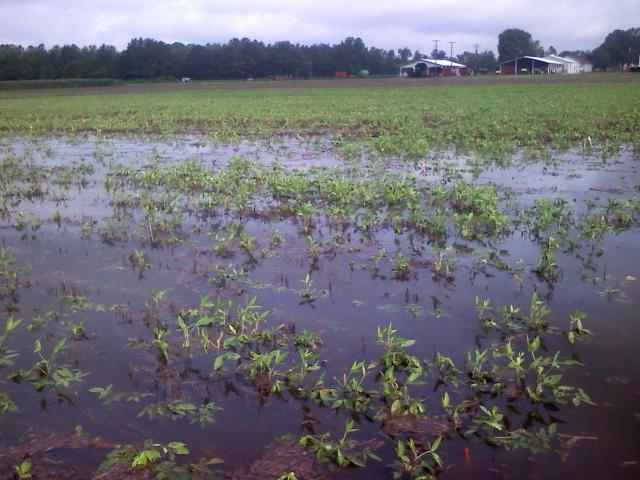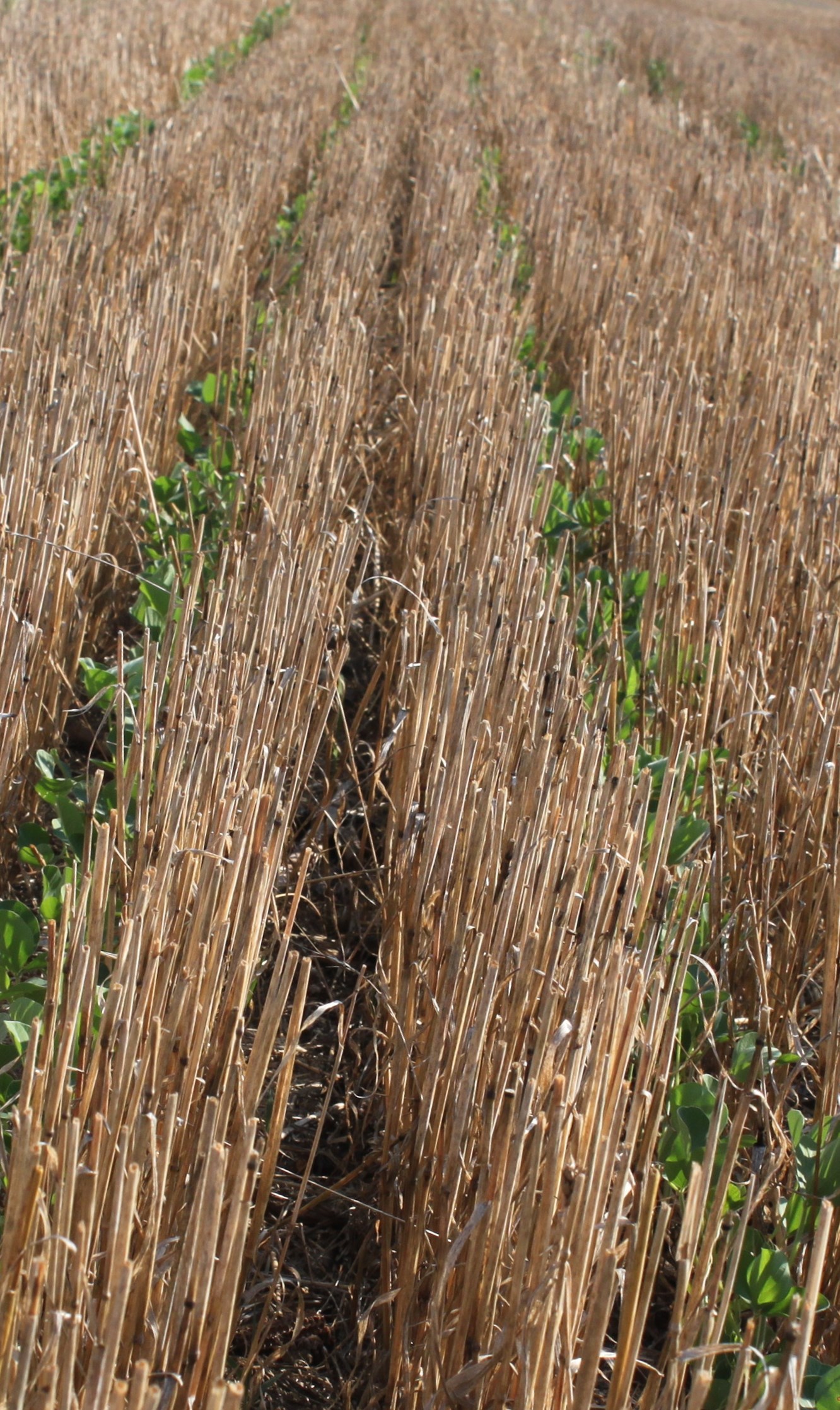Heavy rains over the last two weeks have prevented timely planting of much of our double soybean acreage.  We are slowly drying out and many are anxious to get back into the field. After mid-June, we lose about 1/2 bushel of soybean for every day we delay planting. While this is concerning, going back into the field too early may not be your best choice.
We are slowly drying out and many are anxious to get back into the field. After mid-June, we lose about 1/2 bushel of soybean for every day we delay planting. While this is concerning, going back into the field too early may not be your best choice.
Planting into saturated fields may do more more harm than waiting a couple more days to plant. Tracking and rutting up fields means compaction, which can greatly lower yields and undo much of the good that continuous no-till has accomplished. In addition, opening the soil with disk openers will smear the sidewall and this “micro-compaction” may not allow young roots to develop properly. My general rule of thumb with no-till fields is to wait one more day to plant after you think you can get back into the field.
So, how late can I wait to plant?
With that said, today is July 9! So, how late can you wait to plant? I’ve planted as late as the third week of July and made decent yields (25-30 bushels) without changing varieties. The good thing about all of this rain is that the soil profile is full of water. That is not always the case with double-crop soybean. So, early-season moisture stress (which I think is partially responsible for the temporary cessation of growth after emergence) should not be a problem. Plants should grow fast and yield potential at this late planting date should still be good. My cutoff date is usually July 15-20.
Should I move to an earlier maturing variety?
Late-planted soybean are going to develop more rapidly than those planted in May and June. That is one reason that yields are lower. With every 4 to 5 days delay in planting, you will delay maturity by 1 day. If you are 15 days late planting then you will likely delay maturity by only 3 to 4 days. Choosing an earlier-maturing variety can make up this small difference, but is that the best choice?. This may not be an issue, as most varieties have been purchased and you may not be able to exchange them. But if you do have a choice, and you have experienced that your favorite varieties have barely matured before frost when planted late, then yes you may want to move to a variety that would mature a few days earlier. Half a maturity group or less should do it.
I do suggest to start planting the remainder of your latest maturing varieties first and then finish up with the earlier ones. I would also suggest that you plant your earlier maturing varieties on your best soils as that will minimize the potential yield loss from planting an early-maturing variety late.
What if I can’t plant by the middle of July?
For “prevented planted” acres, I would suggest planting a cover crop to maintain soil quality. With something green growing, your soil chemistry, biology, and structure will greatly benefit. Remember that nothing but weeds grow on bare soil.
Your choice of cover should reflect your plans for next year. If you plan to grow wheat or corn or sorghum, then a legume to fix some nitrogen would be a good choice. If you are going to plant a non-grass crop, a grass cover such as sorghum-sudan or millet would be a good choice for the summer. Come fall, there are several options. Check your insurance policy and see what options are available.

